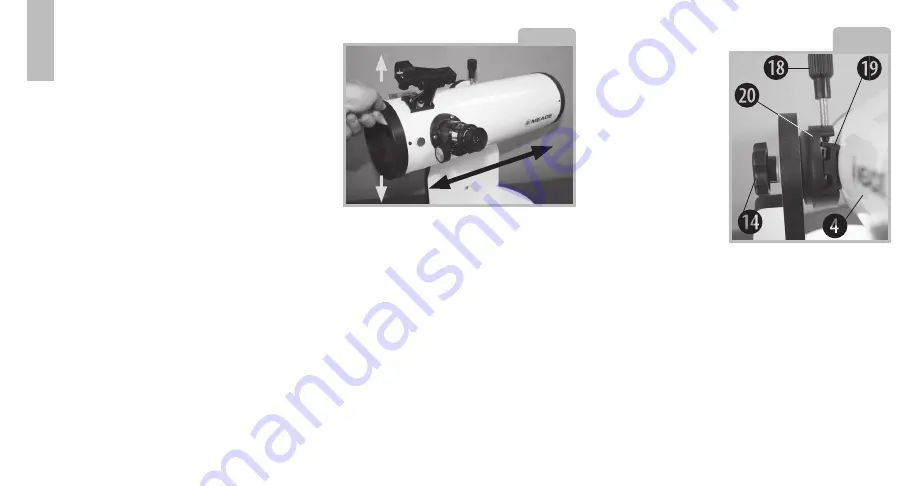
2. Tighten the focuser thumbscrew(s)
(Fig 1, 13) to hold the eyepiece securely.
3. When locating objects it is always
best to start with the low power (26mm)
eyepiece. The 26mm has a wide viewing field
that will allow objects to be more easily found.
Once located and centered, you can switch
to a higher power eyepiece such as a 9mm
to increase the viewing power. The higher
power will present a larger, dimmer image,
with smaller field of view.
BALANCING THE TELESCOPE
(114mm & 130mm models only)
Sometimes when using heavy eyepieces or
accessories, the optical tube can become
out of balance. It is important to balance
the optical tube so when you release the
vertical lock (Fig 1, 14), the telescope will
not swing quickly or move uncontrollably. A
balanced telescope also allows for smooth
motion when using the telescope. To balance
the optical tube, first attach all the desired
accessories, then follow these steps:
6
1. Support the optical tube with one hand and
loosen the vertical lock knob (Fig 3b, 14) on
the side of the mount. The optical tube will
turn freely about this axis. If the optical tube
tends to move or drift when your supporting
hand is moved, it is necessary to balance the
optical tube.
2. If the front of the telescope tube wants
to rotate downward, the optical tube is too
heavy in the front and needs to be adjusted
toward the back.
If the back of the telescope wants to rotate
downward, the
optical tube is too
heavy in the back
and should be
adjusted forward.
3. Loosen the
dovetail locking
knob (Fig 3b,
18) slightly and
slide the optical
tube (Fig 3b,
4) along the
dovetail receiver
(Fig 3b, 20) until
the telescope remains in any given position
without tending to drift up or down in the
vertical axis (Fig 3a).
NOTE: Do not overloosen the dovetail
locking knob or the optical tube could come
completely off of the mount.
4. Relock the dovetail locking knob (Fig
3b, 18) until firm. When the telescope is
Fig. 3b
Fig. 3a
(c) nimax GmbH









































